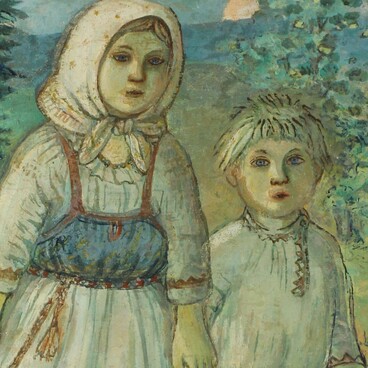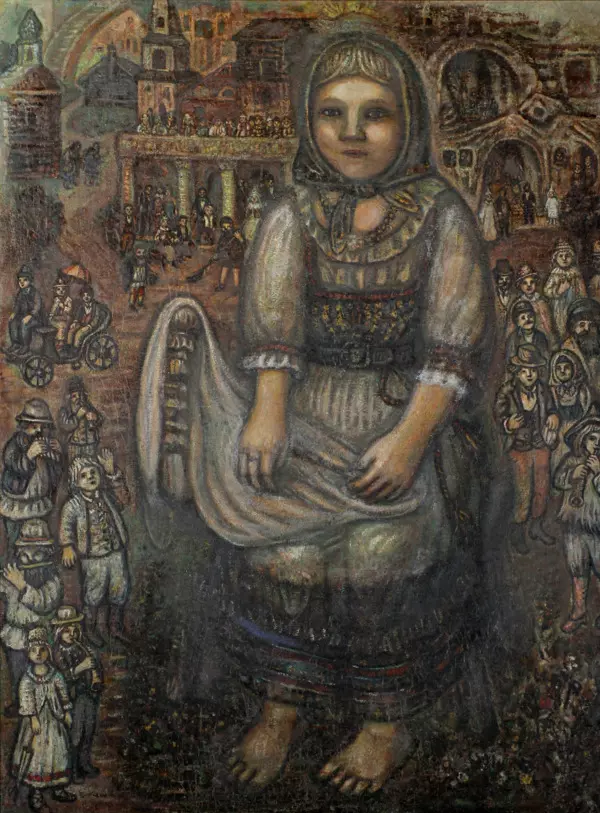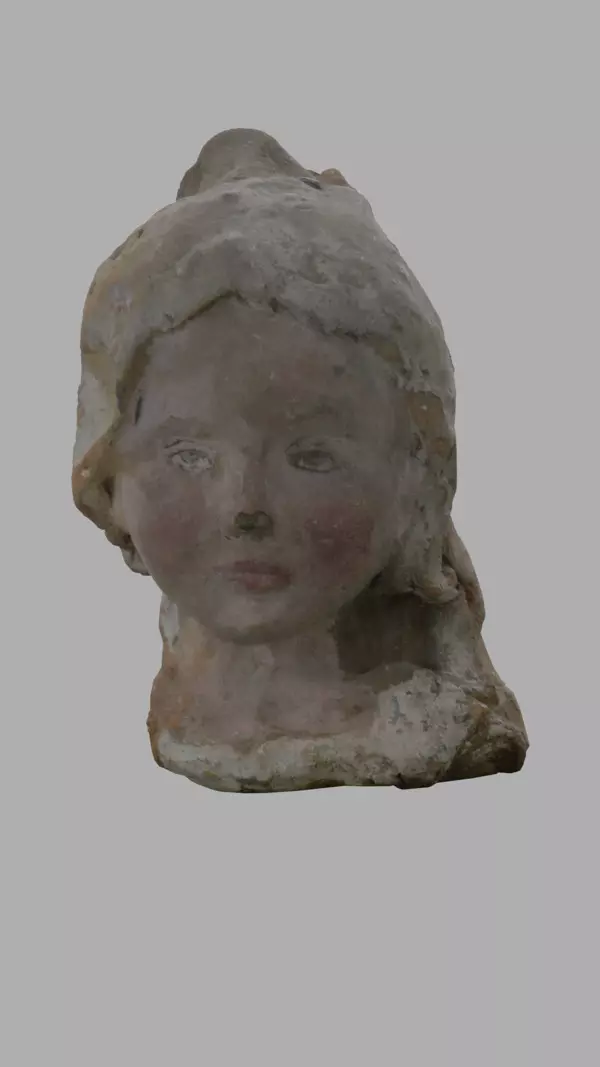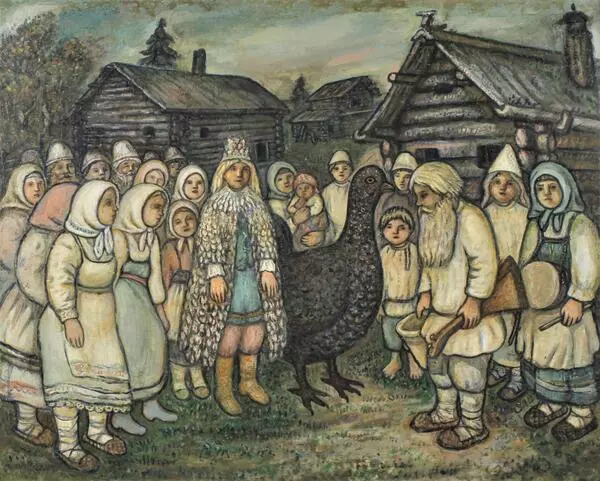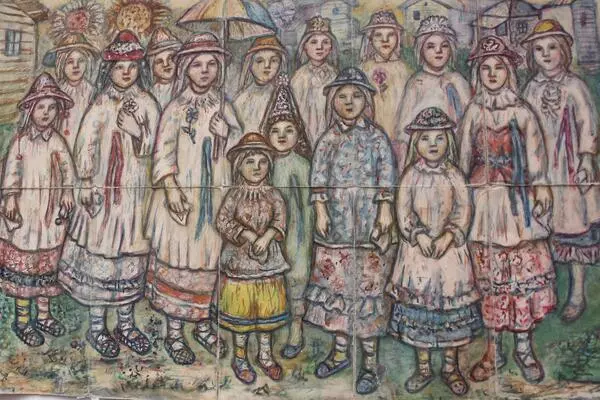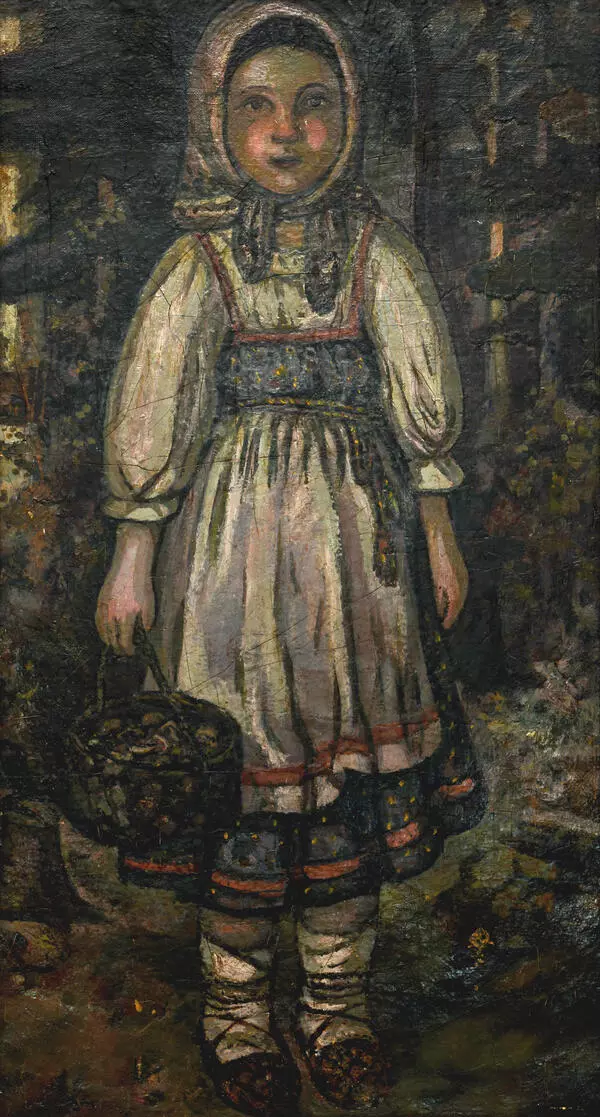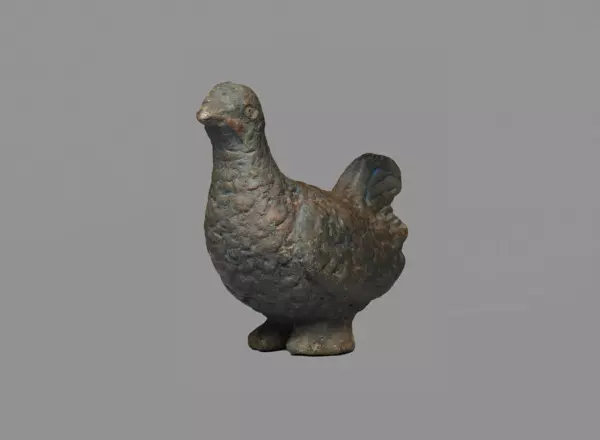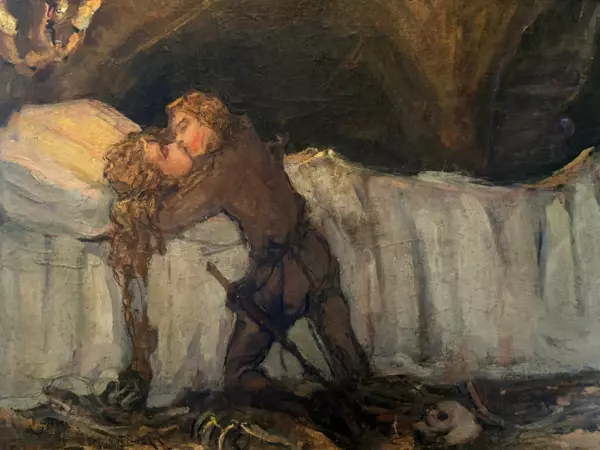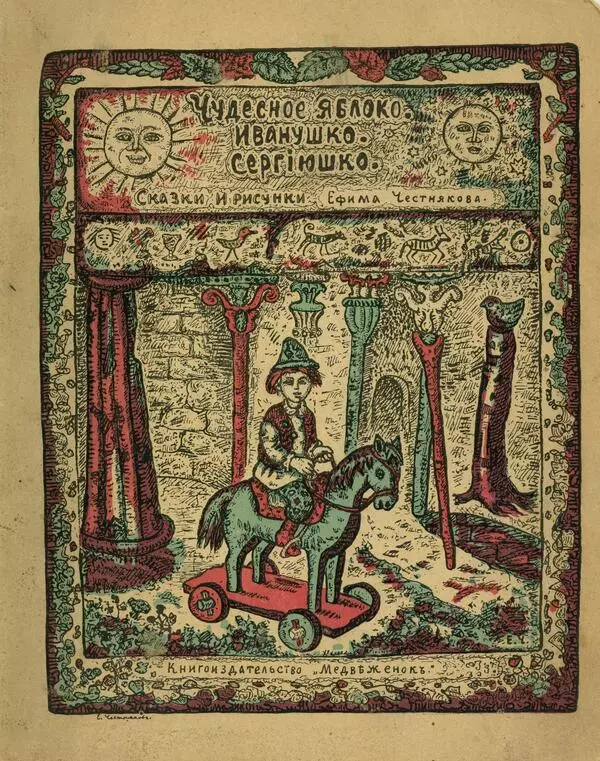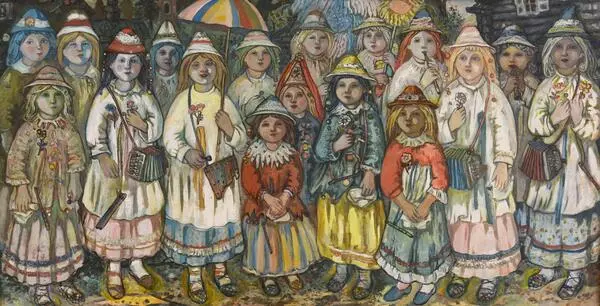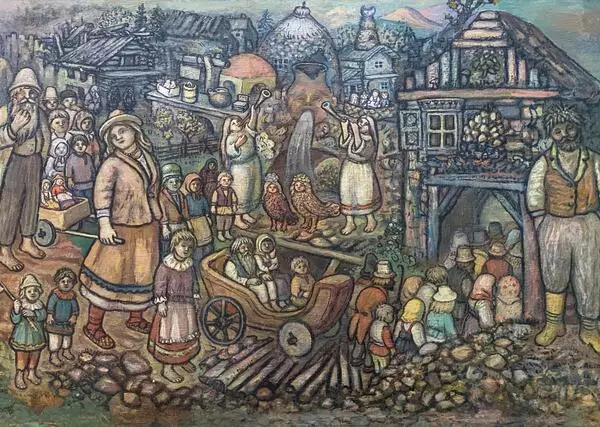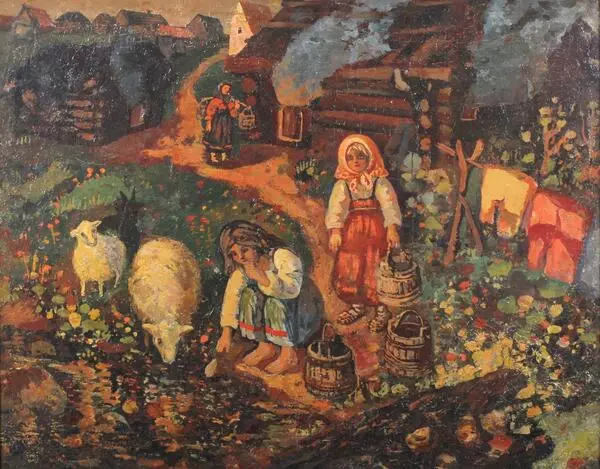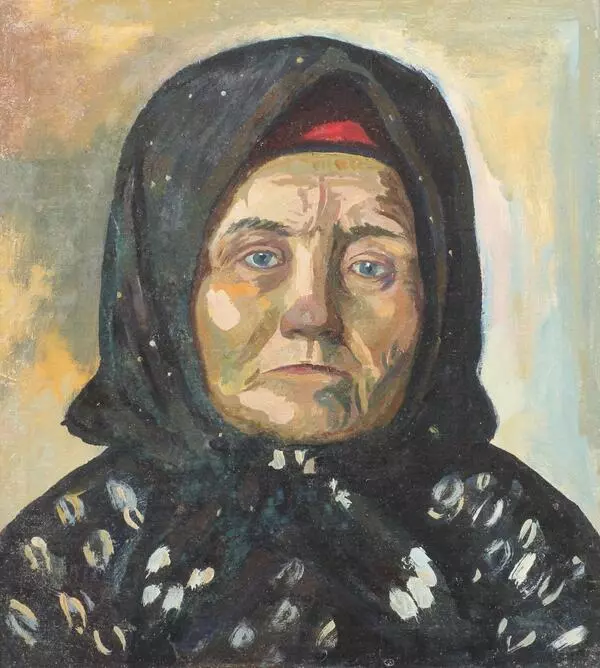Among the art works created by Yefim Chestnyakov in Saint Petersburg, there are a number of watercolor paintings that, in the opinion of researchers, are illustrations to his own novel ‘Marco Beschastny’. We do not know whether he finished working on it or not as only numerous excerpts from it of prose and poetry have survived to this day. The depiction of Marco Beschastny, the main character of the novel, makes him resemble the artist himself in many ways. He is even referred to as Yefim Chestnyakov’s double from literature.
In the novel, Marco’s companion is Gryoza, a dainty ethereal fairy, who comes to visit him, as if for real, from mysterious forests and mists. She also appears as a stranger in artists’ salons and near palace fountains or as a lovely city dweller in a crowd of people. But such encounters are rare and ephemeral because Gryoza cannot live in this world, in its harsh earthly reality. Marco is lonely among people since he feels that he does not belong. The illustration to the “Marco Beschastny” novel was drawn and painted in Yefim Chestnyakov’s customary style using watercolors and colored pencils. But the way the figures are depicted is not completely typical of his works of art that we know.
Unusually, Yefim Chestnyakov used well-defined and broken lines and the figures of people in the illustration are elongated. These atypical features are attributed to the fact that the art work was created early in his career, when he was in search of his own individual artistic style. We do not know which excerpt of the novel this illustrations corresponds to for sure, but the subject matter indicates that we are looking at a portrayal of a romantic urban scene. Marco and Gryoza are in the forefront, holding hands. They are wearing outfits and hats typically worn by city dwellers. Their faces are turned towards one another but a viewer does not see their profiles and three quarters of their faces instead. The female figure is deliberately outlined in white, thus she appears to emit a glow amid the motley crowd of passers-by and onlookers who surround the couple. The young woman is wearing a dress generously adorned with frills and ruffles, and a wide-brimmed hat on her head. She is holding a dainty umbrella, and surprisingly, in contrast to her uniformly white outfit, the red shoes on her feet complement her look. Marco was also depicted using light hues, which are nevertheless colder and duller than those that portray the young woman. It is difficult to discern the young man’s features, perhaps the artist was unsure as to what emotions his face should express. There were no reservations about his outfit, however. He is wearing a greyish suit, a shirt and a tie. The young man appears to be somewhat detached but he has still turned towards his lady, who he is leading along an invisible path by her hand.
In the novel, Marco’s companion is Gryoza, a dainty ethereal fairy, who comes to visit him, as if for real, from mysterious forests and mists. She also appears as a stranger in artists’ salons and near palace fountains or as a lovely city dweller in a crowd of people. But such encounters are rare and ephemeral because Gryoza cannot live in this world, in its harsh earthly reality. Marco is lonely among people since he feels that he does not belong. The illustration to the “Marco Beschastny” novel was drawn and painted in Yefim Chestnyakov’s customary style using watercolors and colored pencils. But the way the figures are depicted is not completely typical of his works of art that we know.
Unusually, Yefim Chestnyakov used well-defined and broken lines and the figures of people in the illustration are elongated. These atypical features are attributed to the fact that the art work was created early in his career, when he was in search of his own individual artistic style. We do not know which excerpt of the novel this illustrations corresponds to for sure, but the subject matter indicates that we are looking at a portrayal of a romantic urban scene. Marco and Gryoza are in the forefront, holding hands. They are wearing outfits and hats typically worn by city dwellers. Their faces are turned towards one another but a viewer does not see their profiles and three quarters of their faces instead. The female figure is deliberately outlined in white, thus she appears to emit a glow amid the motley crowd of passers-by and onlookers who surround the couple. The young woman is wearing a dress generously adorned with frills and ruffles, and a wide-brimmed hat on her head. She is holding a dainty umbrella, and surprisingly, in contrast to her uniformly white outfit, the red shoes on her feet complement her look. Marco was also depicted using light hues, which are nevertheless colder and duller than those that portray the young woman. It is difficult to discern the young man’s features, perhaps the artist was unsure as to what emotions his face should express. There were no reservations about his outfit, however. He is wearing a greyish suit, a shirt and a tie. The young man appears to be somewhat detached but he has still turned towards his lady, who he is leading along an invisible path by her hand.



